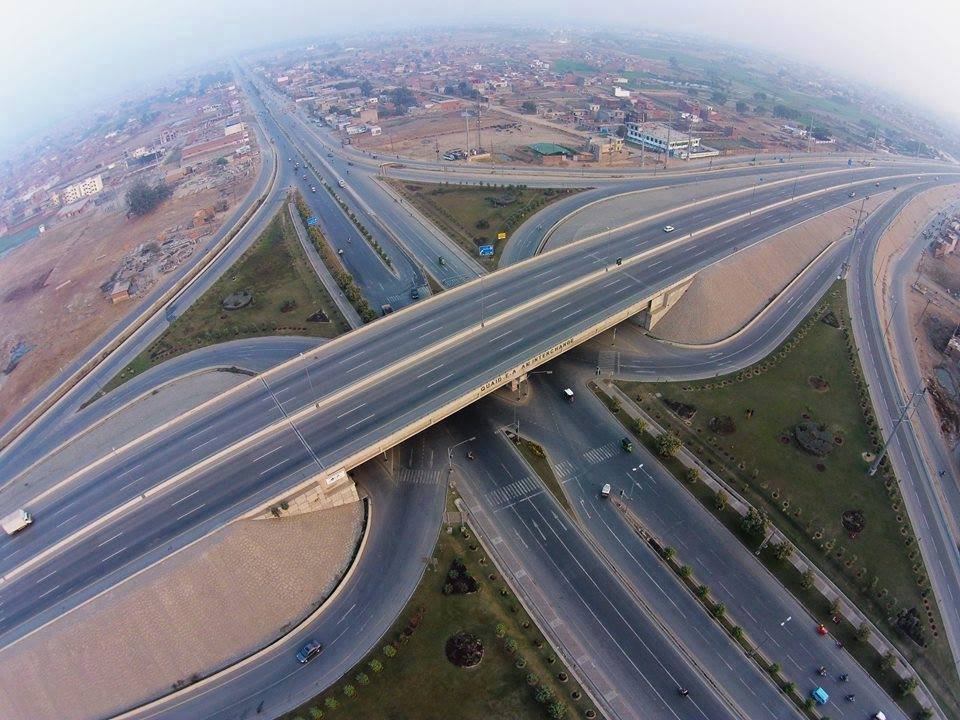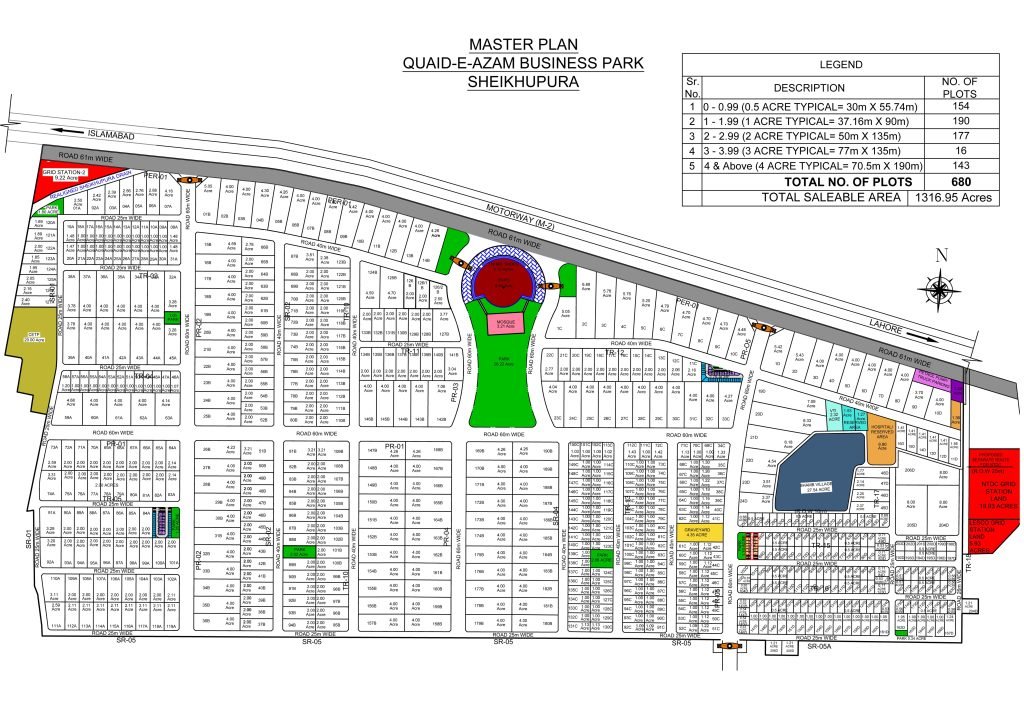Quaid e Azam Interchange Lahore: Complete Guide


The Quaid e Azam Interchange Lahore is a pivotal node on the Lahore Ring Road, stitching together GT Road, Harbanspura, and wider city corridors. This guide gives you the essentials—where it is, how it works, what’s new, and why it matters for daily commuters and property seekers alike.
Table of Contents
Quaid e Azam Interchange Location and Importance
Positioned on the Northern arc of the Ring Road, the interchange streamlines cross-city movement and diverts heavy traffic away from inner neighborhoods. Its layout reduces conflict points, shortens travel times, and supports a steady flow toward the airport, DHA, and GT Road.
Where is Quaid e Azam Interchange in Lahore?
You’ll find it between Harbanspura Road and GT Road (N-5), with quick access to major corridors. For official entry/exit mapping, see the Punjab Ring Road Authority (PRRA) entry/exit list. Community-sourced map pins also exist (e.g., Wikimapia), but the PRRA document remains the authoritative reference.
Roads Connected to Quaid e Azam Interchange
- Lahore Ring Road (LRR): High-speed orbital route distributing traffic citywide.
- GT Road (N-5): Intercity arterial toward Wagah and beyond.
- Harbanspura Linkages: Local connectors easing neighborhood inflows/outflows.
Result: fewer bottlenecks on inner arterials and more predictable trip times.
Nearby Landmarks and Key Distances
Allama Iqbal International Airport Ring Road connection keeps airport runs consistent during peak periods. DHA & Cantonment Fast access via LRR spurs; useful for school/work commutes. GT Road Corridor Direct path toward Wagah and the emerging tourism corridor.
Quaid e Azam Interchange Construction and Specifications


The interchange was delivered as part of the Lahore Ring Road build-out, engineered to handle sustained volumes with grade separation, slip roads, and controlled merges. According to the contractor’s record for Package-10, the project was completed within 310 calendar days with robust civil works and drainage provisions—see HCS project brief for a technical snapshot.
Original Construction Timeline and Cost for Quaid e Azam Interchange
Historic documentation cites late-2000s award and completion milestones, with budgeted outlays typical of multi-ramp grade-separated junctions. Where possible, corroborate figures via PRRA notices and engineering partners like NESPAK.
Engineering Specifications and Capacity at Quaid e Azam Interchange
- Design intent: Grade separation to minimize weaving and conflict points.
- Ramps & loops: Directional ramps and loops tuned to Ring Road speeds.
- Drainage & subgrade: RCC drainage and base layers to withstand monsoon loads.
- Lighting & signage: High-visibility gantries and speed guidance for lane discipline.
Capacity is optimized for continuous flow at posted speed ranges (vehicle class dependent). Always follow on-site signage for limits and lane rules.
Entry and Exit Points of Quaid e Azam Interchange
Access configurations include inbound/outbound ramps connecting LRR to GT Road and Harbanspura approaches. For the most current official list of entry/exit points across the Ring Road (including this junction), refer to the PRRA entry/exit PDF. It’s the authoritative baseline for planning routes and estimating toll interactions.
Author: ZunNurain Khalid — Travel & Tourism Specialist, Founder of ExploreX Pvt. Ltd., and advocate for sustainable tourism in Pakistan. With over a decade of experience in digital marketing and destination branding, ZunNurain has worked extensively on promoting Pakistan’s natural and cultural heritage.
Traffic and Travel at Quaid e Azam Interchange
Traffic density fluctuates with peak commuting windows and intercity flows on GT Road. On typical weekdays, morning inbound and evening outbound volumes are pronounced—especially during school runs and market hours. Newsrooms and civic channels occasionally announce advisories; keeping an eye on reliable local outlets (e.g., Dawn) helps you adapt.
Daily Traffic Volume and Peak Hours at Quaid e Azam Interchange
Citywide counts on the Ring Road are substantial and vary by section. Treat any single figure you see online as indicative, not absolute—volumes respond to new openings, diversions, and seasonal patterns. When precision matters (e.g., logistics planning), verify with PRRA or commissioned traffic studies.
Speed Limits and Driving Rules at Quaid e Azam Interchange
Adhere to posted limits and lane discipline for safety. Speed guidance can differ by vehicle class; enforcement (e.g., cameras) is active on the Ring Road network. When in doubt, follow the most conservative posted sign you observe on your approach.
Alternative Routes During Congestion near Quaid e Azam Interchange
- Ring Road detours: Use adjacent interchanges to re-enter downstream.
- GT Road feeders: Divert via local connectors if incidents occur.
- Time shifting: Avoid peak windows when schedules allow.
Quick Planning Checklist (Quaid e Azam Interchange Lahore)
- Confirm approach ramps using the PRRA entry/exit list.
- Scan a trusted local newsroom or traffic alert channel before departure.
- Budget extra time at school/market peaks; consider adjacent interchanges for detours.
- Follow posted speed and lane signage—limits can vary by vehicle type.
Recent Developments Around Quaid e Azam Interchange
The interchange continues to evolve as part of Lahore’s broader infrastructure expansion. New corridors and projects are reshaping its role beyond a simple traffic node.
Wagah Heritage Corridor Project
In 2025, the government launched the Wagah Heritage Corridor, a 13 km stretch linking the interchange directly to the Wagah border. This is positioned as Pakistan’s first tourism highway, designed to promote cultural tourism and facilitate faster access to border events and ceremonies.
GT Road and Tourism Corridor Expansion
Sections of the GT Road have been earmarked for a “tourism corridor” with planned amenities for travelers. This includes roadside services, improved signage, and parking areas aimed at supporting domestic and international visitors traveling from Lahore to Wagah and onward.
Future Infrastructure Plans in Lahore
Urban planning documents highlight further enhancements to the Lahore Ring Road system, including Southern Loop extensions and possible integration with smart traffic management systems. While timelines can shift, the trend is clear: continued prioritization of Ring Road interchanges for efficiency and tourism growth.
Real Estate and Investment Opportunities
The area surrounding Quaid e Azam Interchange has drawn significant attention from real estate developers and investors. Its strategic location makes it a magnet for residential and commercial activity.
Housing Societies Near Quaid e Azam Interchange
- Al Raheem Garden: Offers affordable housing options close to the interchange.
- Eastern Housing Lahore: Promoted as a modern community with direct Ring Road connectivity.
- Royal Enclave & Adjacent Schemes: Smaller societies taking advantage of proximity to GT Road.
Commercial Projects and Business Value
Developers have highlighted the interchange as a prime spot for warehouses, showrooms, and logistics hubs. Its location between city arteries reduces delivery time for goods moving in and out of Lahore.
Property Price Trends and Future Outlook
Property values around the interchange have shown a steady upward trajectory. Connectivity improvements and the Wagah Corridor project are likely to keep demand strong. Real estate platforms like Zameen.com list plots and properties that reflect this market momentum.
Services and Amenities Around Quaid e Azam Interchange
A well-designed interchange is more than just a set of ramps—it anchors vital services and facilities for travelers and residents alike.
Fuel Stations and Emergency Services
Multiple petrol stations are located near the interchange, providing easy refueling before long journeys. Emergency service points and access to breakdown assistance are improving, especially with PRRA’s oversight of the Ring Road network.
Shopping and Dining Options
Restaurants, small eateries, and markets have grown around feeder roads. Commuters often use these spots for quick breaks on longer drives. Newer commercial zones are expected as real estate developments mature.
Hospitals and Educational Facilities
Institutions such as teaching hospitals and schools within a 5–10 km radius make the area more livable for families moving into nearby housing societies. This balance of accessibility and convenience is one of the reasons real estate demand continues to grow around the interchange.
FAQ About Quaid e Azam Interchange Lahore
Where exactly is Quaid e Azam Interchange located?
The Quaid e Azam Interchange is situated on the Lahore Ring Road near Harbanspura, connecting directly to GT Road (N-5). It lies within a short drive from Allama Iqbal International Airport and DHA, making it a critical junction for both local and intercity travel.
What are the toll charges on Lahore Ring Road?
Toll charges on the Ring Road, including Quaid e Azam Interchange, vary depending on vehicle type. Cars generally pay between PKR 30–50 per entry, while larger vehicles like buses and trucks are charged higher rates. For the latest updates, consult the Punjab Ring Road Authority (PRRA).
How to avoid peak hour congestion?
Morning (7:30–9:30 AM) and evening (5:30–8:00 PM) are the busiest times. To avoid delays, consider using nearby interchanges on the Ring Road to re-route or plan your travel outside these windows. PRRA and local news outlets often issue alerts for traffic bottlenecks.
Which housing societies are near the interchange?
Popular societies close to Quaid e Azam Interchange include Eastern Housing, Al Raheem Garden, and Royal Enclave. These communities offer a mix of affordable and mid-range residential options with direct access to Ring Road.
What is the Wagah Heritage Corridor project?
The Wagah Heritage Corridor is a recently completed 13 km route that extends from Quaid e Azam Interchange to the Wagah Border. It is Pakistan’s first dedicated tourism highway, designed to boost cultural tourism and provide seamless travel for visitors heading to the border for daily flag ceremonies and cross-border events.
Conclusion: Why Quaid e Azam Interchange Matters
The Quaid e Azam Interchange Lahore is more than a transport link—it’s a hub that supports daily commuters, freight logistics, and regional tourism. From its strategic location on the Ring Road to its role in the Wagah Heritage Corridor, the interchange is shaping how Lahore grows and connects to the wider region.
Read More About: 5 Famous Highway of Pakistan
References
- Punjab Ring Road Authority – Entry/Exit Points
- HCS Construction Report on Quaid e Azam Interchange
- ProPakistani – Wagah Heritage Corridor Update
- Dawn – Infrastructure Developments in Lahore
- Zameen.com – Property Listings Near Quaid e Azam Interchange


Author: ZunNurain Khalid — Travel & Tourism Specialist, Founder of ExploreX Pvt. Ltd., and advocate for sustainable tourism in Pakistan. With over a decade of experience in digital marketing and destination branding, ZunNurain has worked extensively on promoting Pakistan’s natural and cultural heritage.

